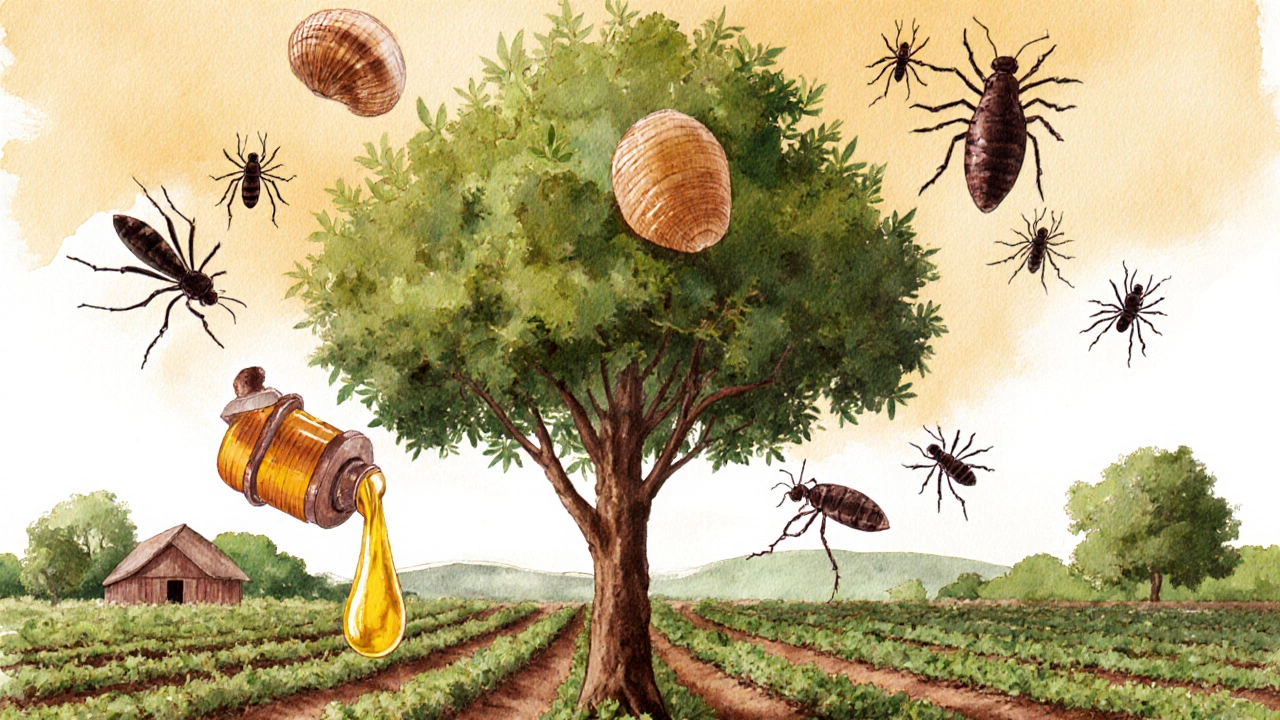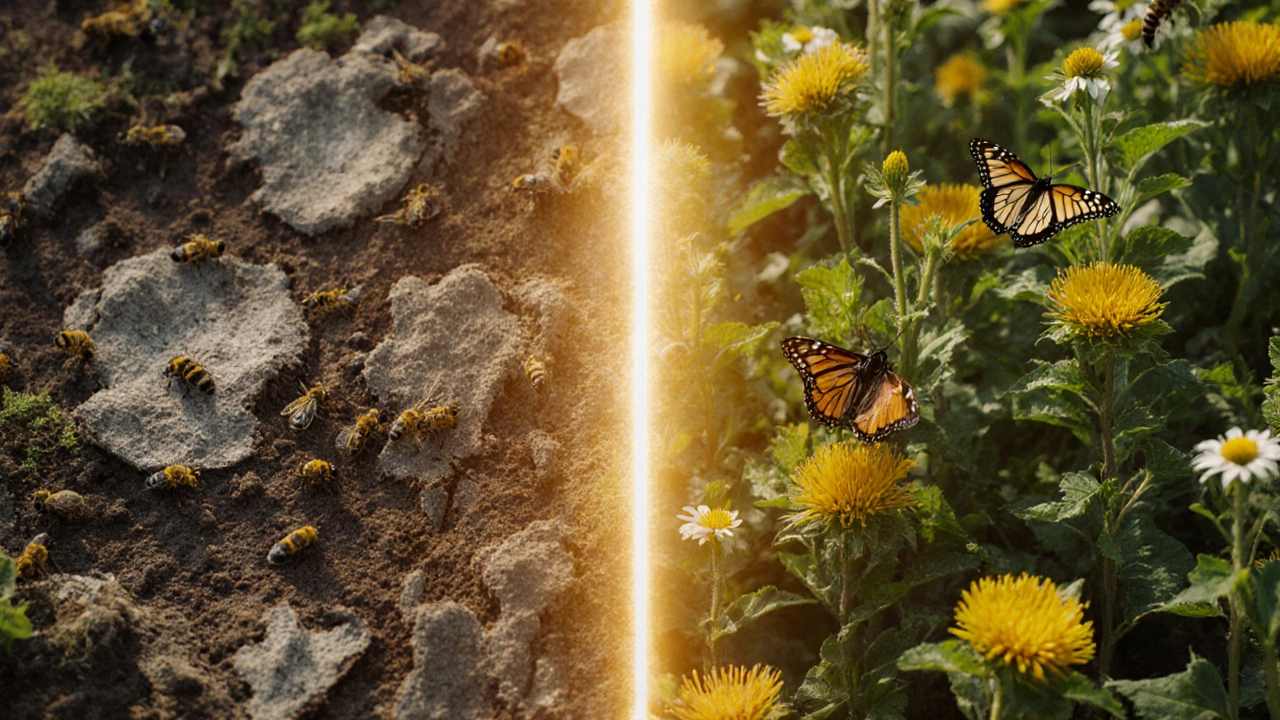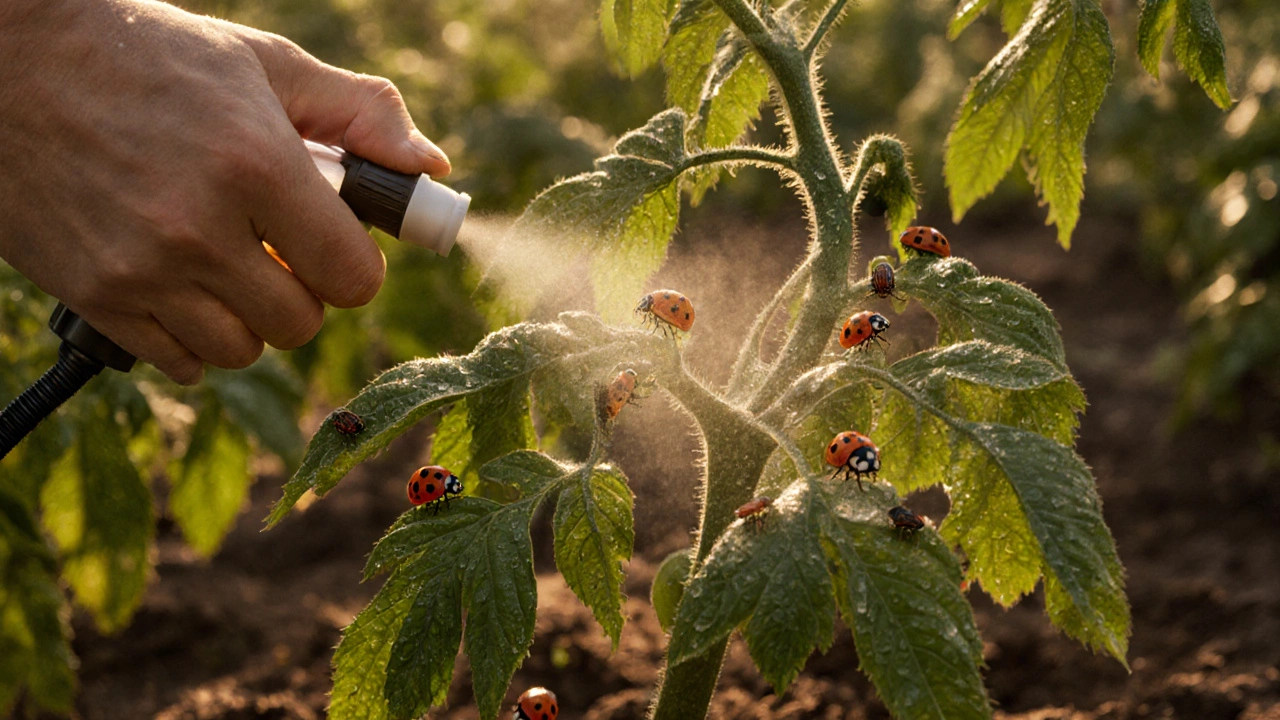Neem Oil Dilution Calculator
Calculate Your Perfect Neem Oil Solution
Ensure effective pest control with the right concentration and application timing
Your Solution
Neem Oil: 0 ml
Mild Soap: 0 ml
Water: 0 liters
Application Guide
Early morning or late evening (avoid direct sunlight)
Spray both sides of leaves thoroughly
Every 7 days for active infestations, 14 days for prevention
Why Neem Oil Outperforms Other Options
-
Pyrethrin: Kills bees and beneficial insects
Duration: 2-3 days -
Soap Spray: Only affects soft-bodied insects
Duration: 1 day (sunlight sensitive) -
Essential Oils: Weak, needs daily application
Duration: < 1 day -
Neem Oil: Safe for bees, lasts 7-10 days
Duration: 7-10 days
Important Safety Notice
Always test on a small area first. Some plants (like ferns, succulents) may be sensitive.
Never store mixed solution - breaks down in 8 hours. Prepare fresh each time.
Do not spray open flowers when bees are active.
When bugs start chewing through your tomatoes, munching on your roses, or crawling up your kitchen windowsill, you don’t want to reach for chemical sprays. You want something that works-fast, strong, and safe for your kids, pets, and the bees. The question isn’t just what is the most powerful natural insecticide-it’s which one actually kills pests without wrecking your garden’s balance.
Neem oil isn’t just popular-it’s the real deal
Neem oil, pressed from the seeds of the neem tree (Azadirachta indica), is the most powerful natural insecticide you can use right now. It’s not hype. It’s science. Studies from the University of Florida and the USDA show neem oil disrupts insect feeding, mating, and egg-laying. It doesn’t just kill-it stops pests from becoming pests.
Unlike pyrethrin or soap sprays that kill on contact, neem oil works over days. Aphids, whiteflies, spider mites, caterpillars, and even Japanese beetles stop eating after one application. They don’t die immediately, but they don’t reproduce either. Within a week, their population collapses. That’s why commercial organic farms in California and the UK rely on it.
It’s also safe. Bees don’t avoid it. Earthworms aren’t harmed. Fish and birds? Fine. You can spray it on lettuce the day before harvest. That’s rare for any insecticide, natural or synthetic.
How neem oil actually works
Neem oil doesn’t poison bugs. It confuses them. The active ingredient, azadirachtin, mimics insect hormones. When a beetle or aphid eats a leaf treated with neem, its body thinks it’s time to molt-even if it’s not ready. The insect gets stuck in its old skin and dies. Females stop laying eggs. Larvae don’t grow. Populations crash without a single chemical toxin.
This means pests don’t build resistance like they do with synthetic sprays. A 2023 study in the Journal of Economic Entomology tracked 12 generations of whiteflies exposed to neem oil. None developed tolerance. The same bugs became immune to pyrethrin after just three sprays.
Neem oil also acts as a repellent. It leaves a bitter residue on leaves that insects avoid. You’ll see fewer bugs even before they start feeding. That’s prevention, not just damage control.
Other natural insecticides-why they fall short
Let’s be clear: other options exist. But none match neem oil’s combination of power, safety, and broad-spectrum effect.
- Pyrethrin comes from chrysanthemum flowers. It kills fast-but so do bees, ladybugs, and aquatic life. It breaks down in sunlight, so you need to reapply every 2-3 days. Not sustainable.
- Insecticidal soap only works on soft-bodied insects like aphids. It does nothing to beetles, caterpillars, or eggs. Plus, it can burn leaves in hot sun.
- Essential oils (peppermint, clove, eucalyptus) smell nice but are weak. You’d need to spray daily, and they evaporate fast. One study found they reduced aphid populations by only 20% after five days.
- Diatomaceous earth works on crawling insects by cutting their exoskeletons. But it only kills when dry. Rain or dew ruins it. And if you breathe it in, it’s bad for your lungs.
Neem oil? It works in rain. It lasts 7-10 days. It’s effective on over 200 species of insects. No other natural option comes close.

How to use neem oil correctly
Using neem oil wrong is worse than not using it at all. Here’s how to do it right:
- Buy cold-pressed, 100% pure neem oil. Avoid blends with additives. Look for azadirachtin content-aim for at least 0.5%.
- Use a 0.5-1% solution: Mix 5ml (1 teaspoon) of neem oil with 1 liter of warm water and 1ml of mild liquid soap (like Castile soap). The soap helps the oil mix with water.
- Shake well and spray in the early morning or late evening. Sunlight breaks down neem oil fast. Midday sprays waste product.
- Coat both sides of leaves. Bugs hide underneath. Miss that, and you miss the pest.
- Reapply every 7 days for active infestations. Every 14 days for prevention.
Test on one leaf first. Some plants-like ferns or succulents-can get leaf burn. If the leaf turns brown after 24 hours, dilute it more next time.
Where to buy real neem oil
Not all neem oil is equal. Cheap brands cut it with mineral oil or solvents. You’ll pay £10 for a bottle that does nothing.
Look for brands like:
- Neem Bliss (UK-made, cold-pressed, certified organic)
- Grower’s Ally (USDA Organic, widely available in garden centers)
- Arbico Organics (trusted by organic farmers)
Avoid anything labeled “neem extract,” “neem concentrate,” or “neem spray” unless it lists azadirachtin content. If it doesn’t, it’s probably just scented oil.

Why neem oil is the only choice for long-term pest control
Chemical pesticides are a band-aid. They kill everything-good bugs, bad bugs, soil life. You spray, you get relief for a week, then the pests come back stronger.
Neem oil is a reset button. It doesn’t wipe out the ecosystem. It lets beneficial insects-lacewings, parasitic wasps, ladybugs-come back and do their job. Within a few weeks, your garden starts regulating itself.
That’s why gardeners in Manchester, Brighton, and Edinburgh who switched to neem oil stopped spraying altogether after two seasons. Their plants got healthier. Their soil improved. Their bees returned.
It’s not magic. It’s ecology. And it’s the most powerful tool we have for natural pest control.
What about homemade remedies?
You’ve probably heard of garlic spray, chili pepper spray, or vinegar solutions. They’re popular online. But here’s the truth:
- Garlic spray repels some aphids-but only for 2 days. And it smells awful.
- Chili spray burns your eyes when you spray it. And it doesn’t touch beetles or caterpillars.
- Vinegar? It kills plant tissue. You’ll damage your leaves more than the bugs.
These recipes might make you feel like you’re doing something. But they’re not reliable. They don’t scale. They don’t last. Neem oil does.
Final verdict: Neem oil wins
There’s no contest. Neem oil is the most powerful natural insecticide available today. It’s backed by decades of research, used by organic farms worldwide, and safe enough for your salad greens. It doesn’t just kill pests-it stops them before they become a problem.
Other options? They’re either too weak, too toxic, or too short-lived. If you’re serious about natural pest control, neem oil isn’t just the best choice-it’s the only one that delivers real results without collateral damage.
Is neem oil safe for bees and butterflies?
Yes, when used correctly. Neem oil is not toxic to bees or butterflies when sprayed in the evening after they’ve returned to their hives or resting spots. It only affects insects that eat treated leaves. Since bees and butterflies feed on nectar, not plant tissue, they’re not harmed. Always avoid spraying open flowers.
Can I use neem oil on edible plants?
Absolutely. Neem oil is approved for use on fruits, vegetables, herbs, and edible flowers right up to harvest day. Wash produce with water before eating, as you would with any sprayed crop. It leaves no harmful residue and breaks down naturally in soil.
How long does neem oil last once mixed?
Mix it fresh. Neem oil breaks down quickly in water-within 8 hours. Never store mixed spray overnight. Always prepare only what you need for one application. Store unused concentrate in a cool, dark place; it lasts up to two years.
Does neem oil work on fungus or mildew?
It helps, but it’s not a fungicide. Neem oil can suppress fungal spores and reduce powdery mildew growth by creating a barrier on leaves. For serious fungal infections, use a proper organic fungicide like potassium bicarbonate. Neem works best as a preventive, not a cure.
Why do some people say neem oil doesn’t work?
Most often, it’s because they used the wrong product. Cheap neem oil with low azadirachtin content won’t do anything. Others spray in direct sunlight, which degrades the oil before it works. Or they only spray the top of leaves. Neem needs consistent, thorough application over 2-3 weeks to break pest cycles. Patience and precision matter.

